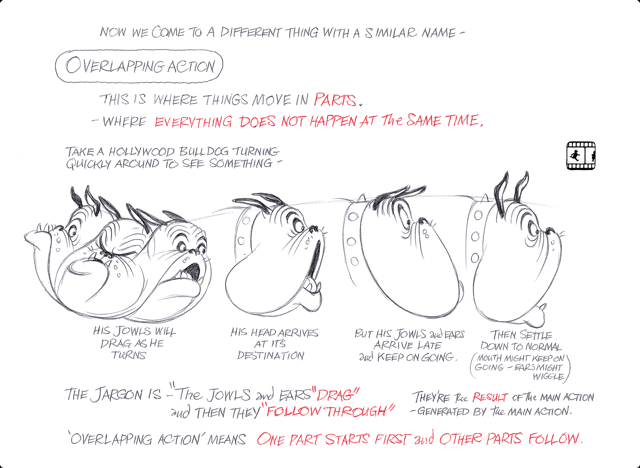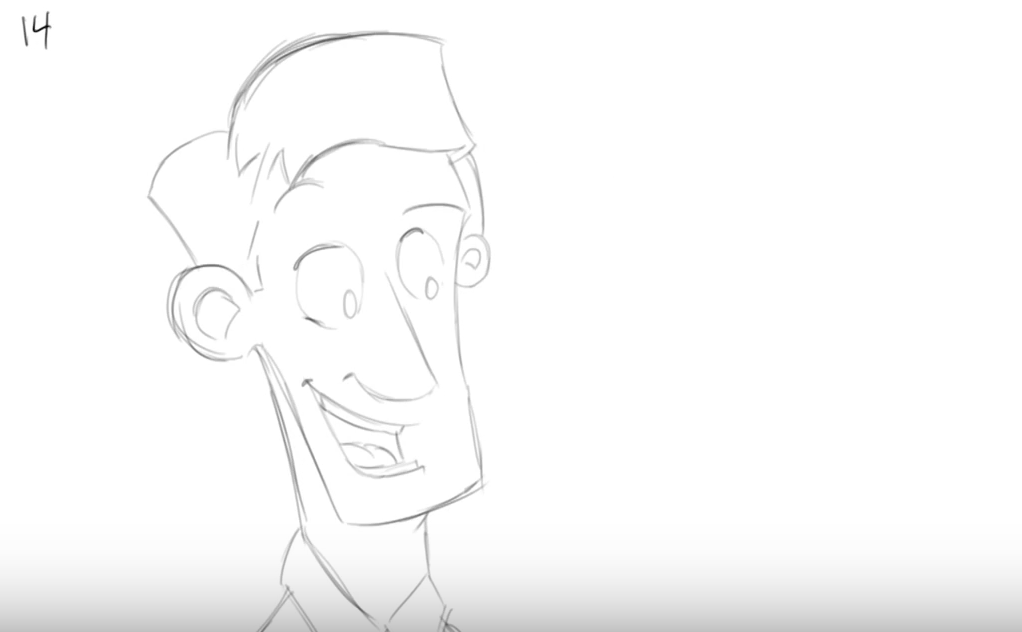Module 5 - Emotional Pitch
Preface
This week we will be taking a break (albiet a short one) from the full animation process to look back at the face. The face is the most expressive part of the body. Very subtle changes in the muscles of the face can completely change how the emotions will be observed by other people. As animators you have a lot of power with the face and it is important that it is used to its fullest. However, as animators it can also be tempting to get lazy and only show emotion with the face. If there is anything that I hope you have learned over these 3 classes is that every aspect of the character matters in every scene at all times. One can evoke emotions very well without using the face at all. When that skill is combined with the face the results are far better than otherwise.
We have discussed this before so why are we rehashing it again? I am glad you asked. We are touching on these subjects again because 1) they are that important and 2) we haven't really covered some of the techniques of flowing from pose to pose with emotional facial expressions.
Emotional Pitch
This week we are talking about emotional pitch. This isn't an official term, but it is one that I have heard form actors before. The first mention of it that I remember was on the behind the scenes for "The Lord of the Rings." Billy Boyd (Played one of the hobbits named Pippen) was discussing a specific scene in the film that comes at the end of the very long trilogy. In this scene they are all saying goodbye to some of the main characters and they realize they also have to say goodbye to the main character and one that is closest to them, Frodo. In the behind the scenes interview Billy Boyd was talking about how gruelling that scene was to shoot as they were supposed to be very emotional and crying in it. These shots took all day to shoot and they had to remain at that emotional level throughout the day. He stated how exhausting it was to maintain that 'emotional pitch.'
Emotional pitch can be described as the level at which emotions are expressed. There is a difference between someone who is angry and someone who is furious. What brings one from angry to furious is different from person to person, but the difference is clear. The same can be said for being sad and being devastated. Happy or ecstatic. Tired or exhausted.
When animating you really need to know where the character is in the shot you are animating. Where have they come from and where are they going in the story. If you animate your character at full emotional pitch in every scene you create a character that is just too manic for any one specific scene to stand out. There is a difference between pushing a shot for readability and pushing the emotion to the breaking point. If the scene you are animating is the culminating moment for a character development then ensuring you seriously push the emotional pitch is critical. Now, depending on what kind of character development turn is happening it may be a contrast that represents it; a sudden lack of emotion where there was previously a ton. Emotions are more than just drama. Not everything has to, or should be, super dramatic like a soap opera tv show. Our actions are driven by our emotions. Know the emotion thats driving the action of your character.
Pixar went head on with emotions and made a whole movie about it, "Inside Out". This movie is a story telling masterpiece and the animation throughout is absolutely fantastic. Watch this scene as we are introduced to each of the 5 core emotions (characters) in the movie. What I want you to notice is that each character has a range of emotions themselves even though their underlying emotion wins out each time (Joy, Sadness, Disgust, Anger, Fear).
Take a look at some of these clips as well to see how emotion is clearly represented throughout the body and face.
Facial Transitions
When animating the face it can be tempting to just go from pose to pose whether for dialog or emotional changes. Blend them evenly and you are good. If you have been paying attention this whole time you should hopefully know that is not true. How your character moves from pose to pose matters as much as the poses themselves. This doesn't have to be when dealing with strong emotional poses or pitch. It can even be just a simple head turn from left to right.
Here are some snips from the web including "Animators Survival Kit" to illustrate different facial transitions:
These simple examples illustrate that the in-betweens in your shots are far more than just the filler. Every frame counts in animation. Key frames are important of course, but the breakdowns and in-betweens are where a lot of the emphasis of emotion and or consistency in emotional pitch can come into play. Knowing these transitional elements now watch this clip again and see if you can pick out the areas where these transitions take place. Pay special attention to 'Fear' and his arm movements :)
Assignment
This weeks assignment is pretty simple. You are going to exercise a bit of practice animating quick transitions between facial expressions. Please select 3 different facial poses that evoke strong emotions. You will then use your animation principles and techniques from this module to pose and animate transitions between them. Remember that its not just a smooth blend from one to the next. Use exaggeration, blinks, head tilts and more to really sell and exaggerate the transition. Also make sure you represent full emotional pitch with each pose.
Once you are complete produce a playblast of the animated sequence and submit it to Assignment 7 on UNM Canvas before the listed due date on Canvas.

